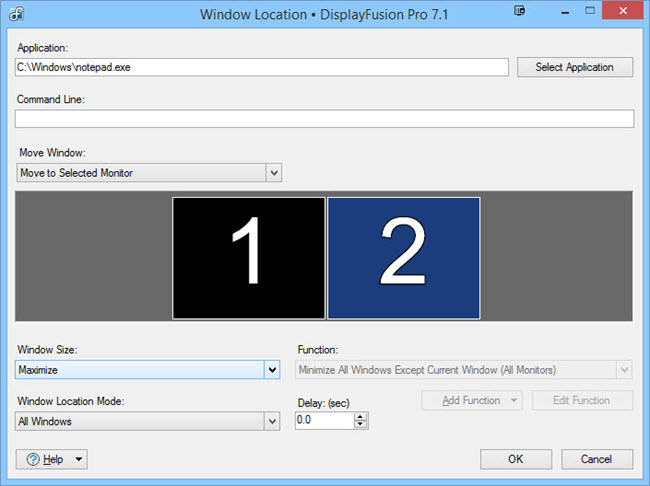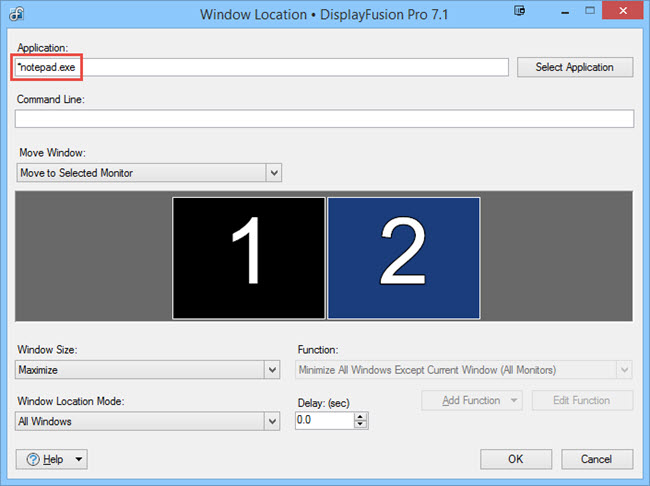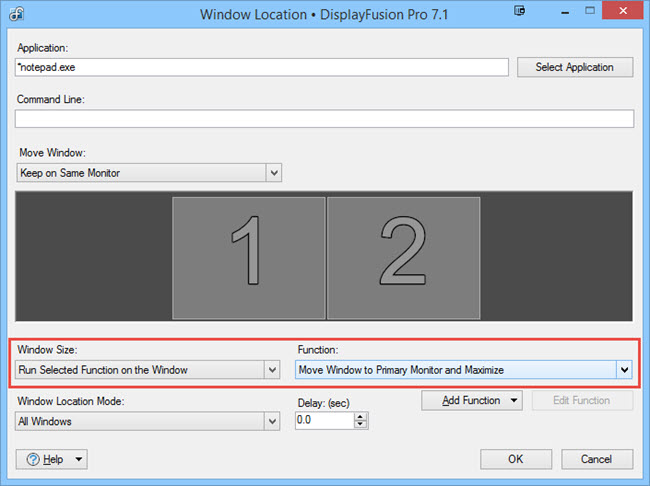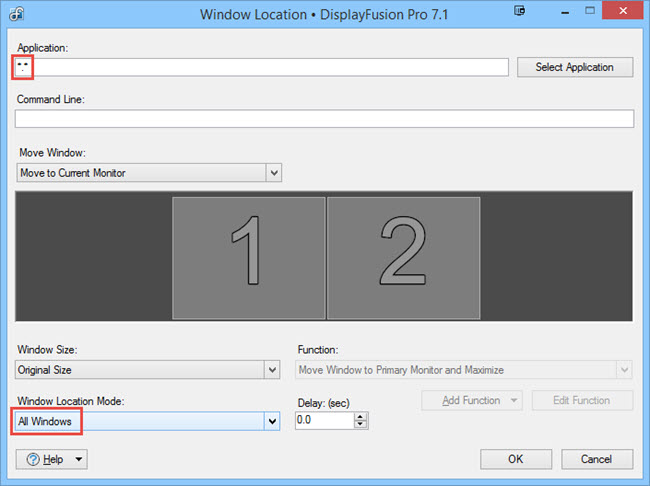Note: Starting with DisplayFusion 8.0, Window Location has been replaced by the more powerful feature, Triggers. You can find out more about Triggers here: https://www.displayfusion.com/Discussions/View/working-with-triggers/?ID=43b31609-4ec6-4478-99f8-a1f11e9793f7
Window Location is a powerful feature that allows you to set the default location of an application's first window only, or the first window as well as subsequent child windows. You can have the application automatically move to a specific monitor and have it centred, maximized, or minimized. If you want to get even fancier, you can have the Window Location rule run any function from the list of functions on the Settings > Functions tab. You can even create a custom function to set the exact location and size in pixels, or you can create a scripted function to do almost anything you like with the window.

If you want a Window Location rule to apply to multiple applications, you can use an asterisk as a wild card, or you can specify multiple programs separated by a pipe. Here are some examples:


